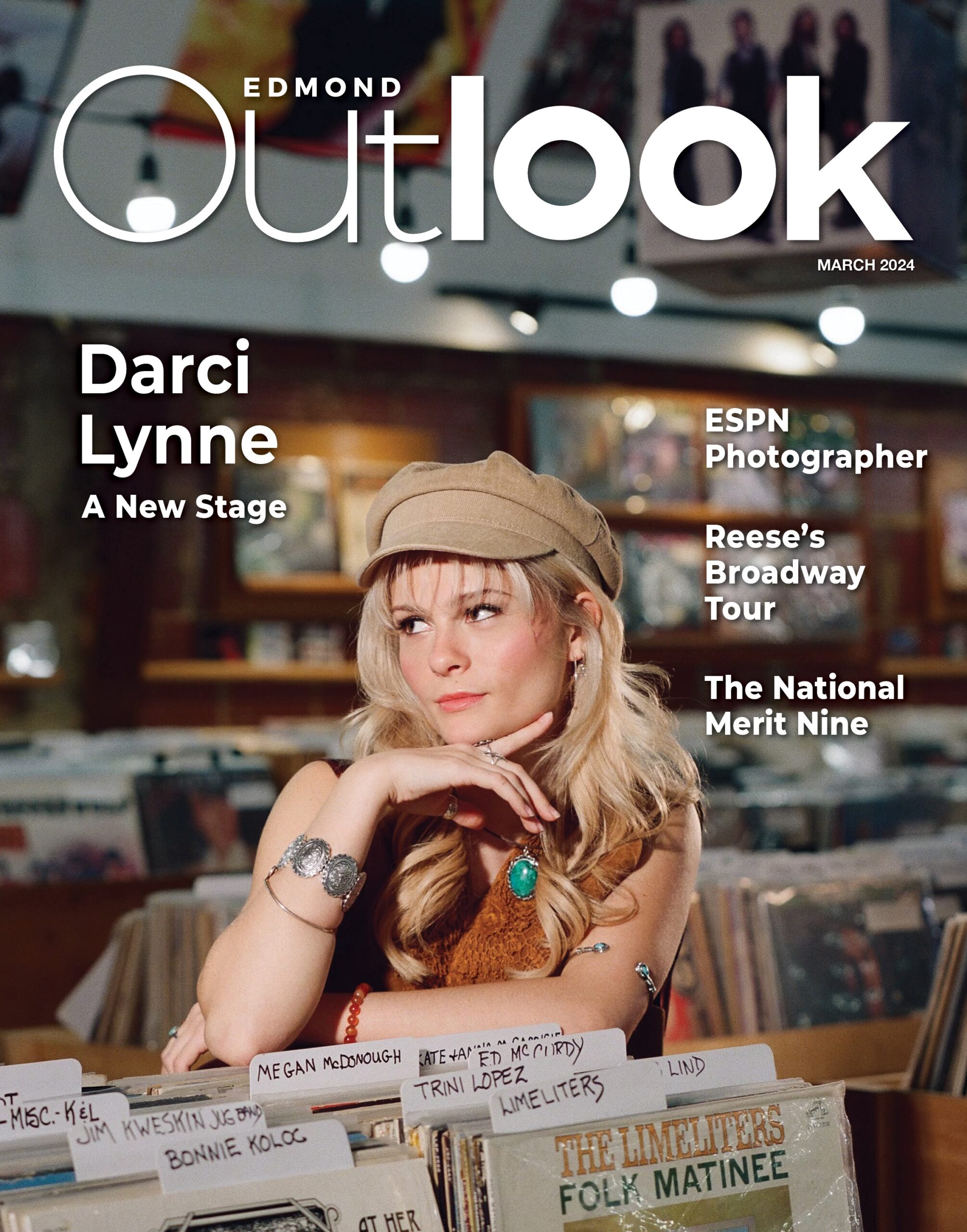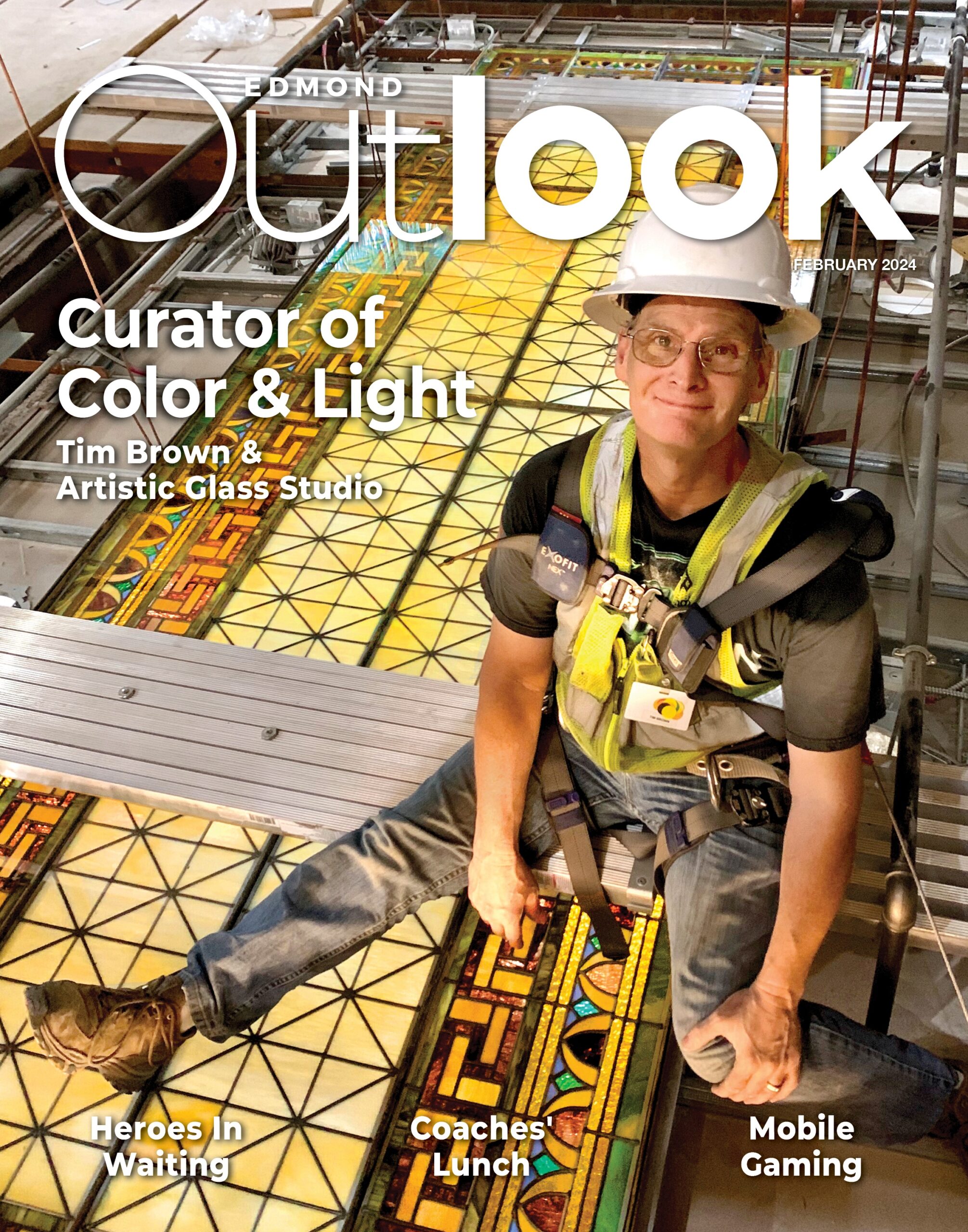Tree Theory: Hand-Crafted Furniture
“What can that board become?” is a question Todd Graham asks himself every time he looks at a new piece of rough timber. He crafts furniture the old-fashioned way, in an unassuming Edmond garage workshop filled with hand tools and a band saw.
Usually, it’s a raw chunk of wood with potential that inspires a new project. If he sees a section of sycamore that looks like it could become a shelf, he makes sure it becomes one. “When you’re designing around a specific board, it dictates the aesthetics of the piece,” Graham says. “After I know what a board can be, then I draw it.”
“The material is half the battle,” he adds. “It’s taken me a long time to actually find this stuff. If you walk into a lumber yard and ask for a 25-inch piece of walnut, they’ll laugh at you.”
Graham gets his material from farmers and tree services. The lumber would be headed for a fire or a chipper if he didn’t intervene. No trees are chopped down for his work. “I’m trying to do something that’s responsible to the environment,” Graham says.
“It doesn’t seem like there are a whole lot of people doing what I’m doing — using a lot of local material, making traditionally-made furniture in modern forms,” he says.
Graham does a lot of re-sawing, book-matching, and uses wood-to-wood mortise and tenon joints. “Where I can, I try to expose joints and let them be seen,” he says. “I enjoy the structural aspects of them.”
His method is a hybrid process, using power tools where necessary, but hand tools whenever possible. “There’s a lot you can do with hand tools that you can’t do with power tools,” Graham explains.
He started as a cabinet-maker about 12 years ago, just out of high school; then started making furniture as a hobby almost seven years ago. In the last year-and-a-half, he set up www.treetheory.com and has made crafting furniture a full-time career.
“It’s an awesome opportunity for me to be able to do this. Not everybody has the opportunity to do something they love for a career,” Graham says.
His wife, Tricia Graham, says it’s great that his hobby has turned into something more. “It’s cool to see the whole process of him starting with a log and turning it into some beautiful furniture, then someone buys it and they see it and have an appreciation for it,” she says. “It will be in their homes and in their lives for years to come.”
Graham loves walnut and sycamore, and by the time he finishes a piece, he’s spent so much time with it that he knows every feature, every grain. Sometimes, he’ll spend hours sanding a two-inch part of a cabinet that no one will ever see because he wants every aspect of his furniture to be as beautiful as it can be.
“I’m really inspired by mid-century design — minimal, functional, but still beautiful in design,” he says. “The more I build, the more the material tends to influence what I’m doing. It’s a little ridiculous, but I get excited about the boards.”
When Graham was a child, his grandmother owned an antique store and would frequently make trips down to Mexico to collect things from the Tarahumara Indians. Graham says some of his inspiration comes from growing up around such one-of-a-kind pieces.
A handmade, wooden bowl from his grandmother’s Tarahumara collection sits on his dining room table. The bowl is asymmetrical, yet beautiful. It’s obvious that it was held by human hands and quietly sculpted until the artist deemed it perfect, similar to the way Graham’s creations find their own unique life.
His work looks and feels different from other furniture because it’s made by hand. There are tiny variations that you can only experience by actually touching the piece. Photographing the furniture can be frustrating, because he knows that it’s impossible to convey the entire feel of his work with just a picture. “It’s important that you come in and touch it, and feel it,” he says. “Visually, you see it, but it has its own texture.”
“So many things are mass-produced. We want it cheap, we want it fast, and we want it now,” Graham says. “My furniture is not cookie-cutter. If you purchase one of my pieces, you won’t go to your friend’s house and see the same furniture.”
Graham uses an oil finish that is nontoxic and hand-rubbed. “The finish is a big part. It gives it that glow, that silky feel,” he says.
His furniture is often displayed at Istvan Gallery in the Plaza District off N.W. 16th between Classen and Pennsylvania. Graham recently entered some of his work in VisionMakers, a biannual craft show in Tulsa. Last year, he won the curator’s choice award at Momentum, an annual show in Oklahoma City that features artists 30 years old and younger.
His next exhibit will be at a fine furnishing show in Baltimore. “I think Todd has a lot of passion and drive. We’re all immensely proud of him and the quality he puts out is amazing,” Tricia said.
“It’s satisfying. There’s something about making something with your hands — starting with a tree and ending with a piece of furniture,” Graham says. “It’s a very gratifying process to see something from start to finish, after it’s just an idea in your head.”
To see more of Graham’s work, or to contact him for a piece of furniture, visit his website at
www.treetheory.com.


